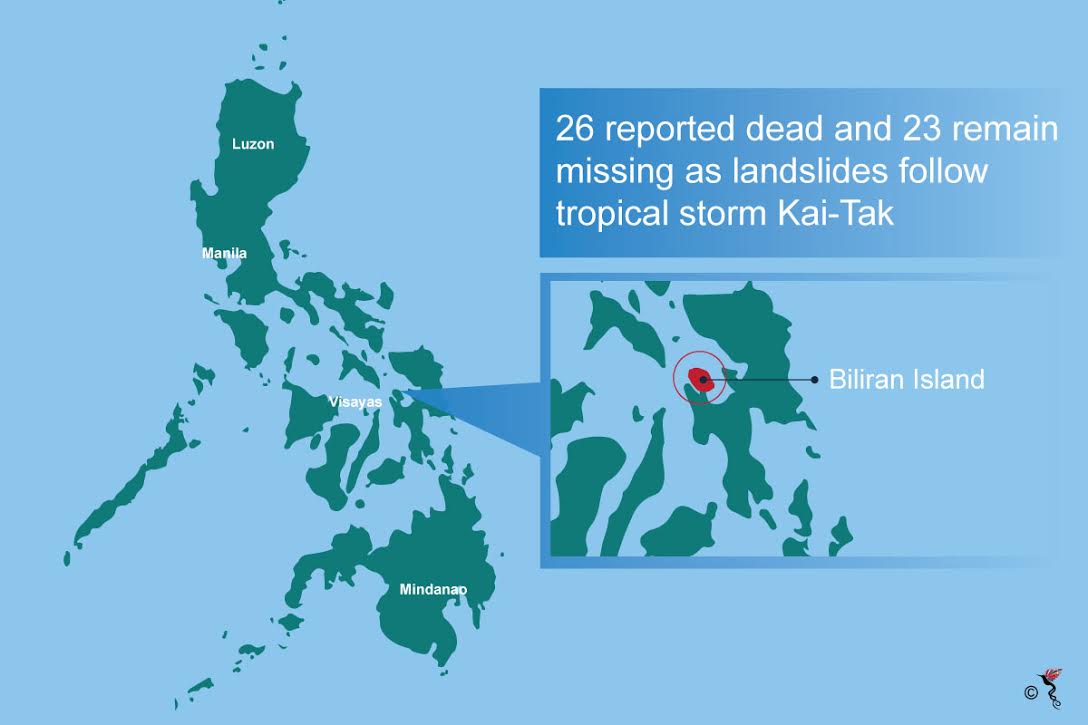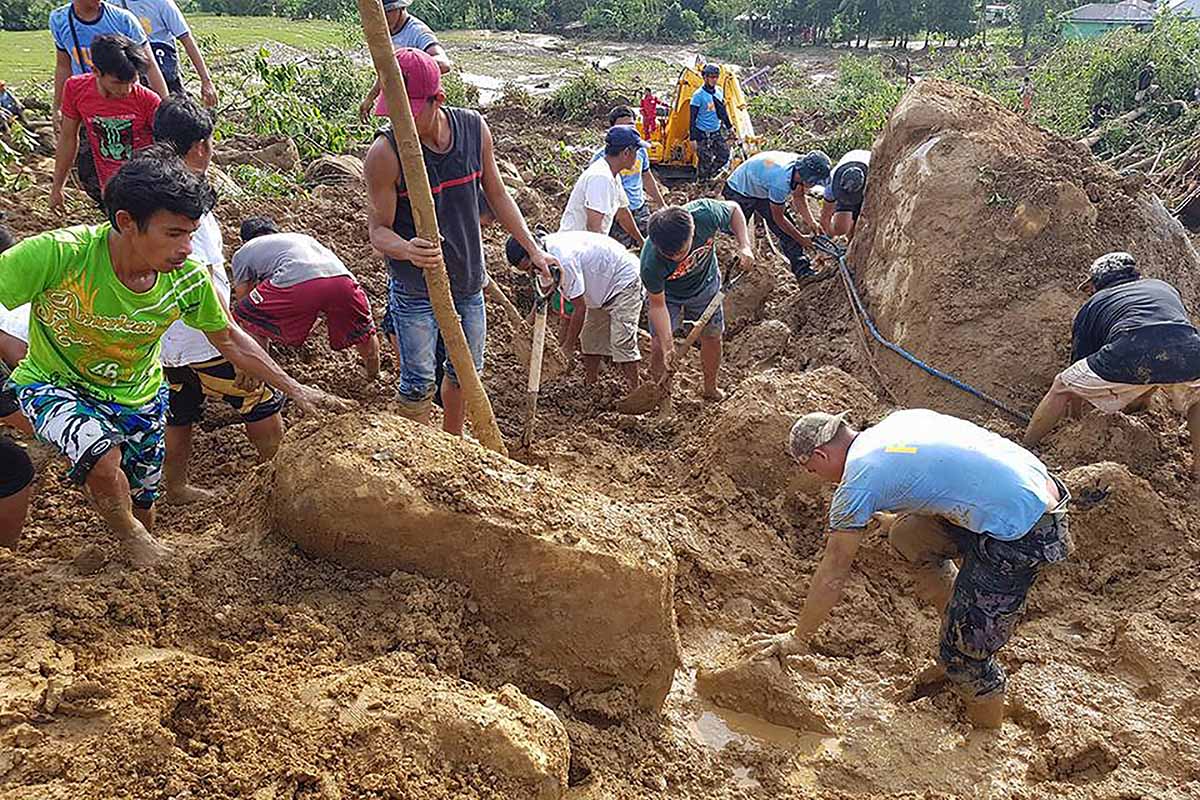At least 26 people were killed while 23 remain missing in an island province in central Philippines after tropical storm Kai-Tak brought heavy rains that triggered landslides on Sunday.
The deaths were reported in the small island province of Biliran, a day after the storm pulverised the east of the archipelago nation.
Kai-Tak split across the major islands of Samar and Leyte on Saturday, toppling power lines in 39 towns or cities and damaging roads and bridges, the national disaster agency said.
It also forced the cancellation of several flights, stranded more than 15,000 people in various ports in the region and prompted almost 88,000 people to seek shelter in evacuation centers.
According to AFP, chief inspector Lilibeth Morillo, "rocks as big as cars fell on concrete houses after three days of continuous, heavy rain.”

Map locating the island of Biliran in the Philippines, where many people are reported to have died in landslides that followed the passage of a major storm.
"There were six families living there but they did not evacuate," she said, adding seven bodies were recovered in the area.
Kai-Tak weakened to a tropical depression on Sunday afternoon, with gusts of up to 80 kilometres an hour, after barrelling through the eastern region of Visayas, hitting islands and coastal towns like Tacloban City where supertyphoon Haiyan had claimed 8,000 lives back in 2013.
President Rodrigo Duterte on Sunday said he would soon fly to the storm-hit areas.
Quoting AFP, Duterte said in a speech, "There is so much destruction there. There are places where the bridge was destroyed and I would like to see for myself what government can do better.”
Landslides in Philippines
"I've been stranded for three days, sleeping in the bus, and I just want to get home to my family for Christmas," Eliaquin Pilapil, a 55-year-old farmer, told AFP from a port in the town of Matnog in the eastern province of Sorsogon.
Disaster officials have cautioned that more floods and landslides were possible and said that 15,500 passengers were stranded because ferry services remained suspended in some parts of the region.
The landslides have come at an inconvenient period as the Christmas holidays are just around the corner and is the busiest travel season.
According to the Philippine Atmospheric, Geophysical and Astronomical Services Administration (PAGASA) yesterday, Urduja slightly weakened but will continue to dump rains over MIMAROPA (Mindoro-Marinduque-Romblon-Palawan) in the next few days leading up to the festive season.
Storms and landslides are not uncommon in the Philippines and the nation is pummelled by about 20 major storms each year, on average. The infamous Super Typhoon Haiyan in the region of Samar and Leyte previously left more than 7,350 people dead or missing in 2013.
Earlier in July, a quake causing landslides in the Leyte town of Kananga left two people dead and four missing. Last Saturday’s storm brought flash floods up to 1.5 metres and strong winds that left the Leyte city of Tacloban without power and water.
To add more misery to people who were still recovering from Haiyan’s destruction, the tropical storm also damaged crops and infrastructure over the weekend.
Recommended stories:
